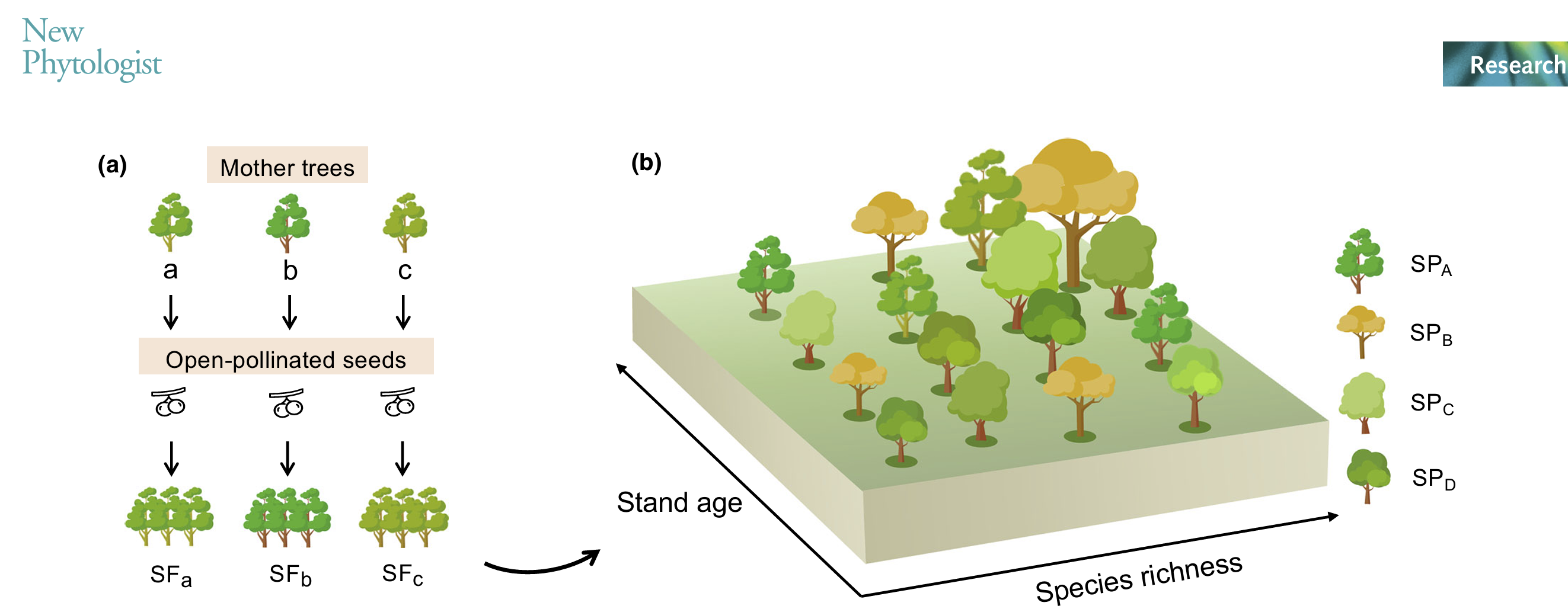Afforestation projects using species mixtures are expected to better support ecosystem services than monoculture plantations. While grassland studies have shown natural selection favoring high-performance genotypes in species-rich communities, this has not been explored in forests.
We used seed-family identity (known maternity) to represent genetic identity and investigated how this affected the biomass accumulation (i.e. growth) of individual trees (n =13 435) along a species richness gradient (1–16 species) and over stand age (9 yr) in a forest biodiversity experiment.
We found that among the eight species tested, different seed families responded differently to species richness, some of them growing relatively better in low-diversity plots and others in high-diversity plots. Furthermore, within-species growth variation increased with species richness and stand age, while between-species variation decreased with stand age.
These results indicate that seed families within species and their reaction norms along the species richness gradient vary considerably and thus can explain a substantial proportion of the overall variation in tree growth. Our findings suggest that the growth and associated ecosystem services of species-rich mixtures in afforestation projects can be optimized by artificially selecting seed families with high mixture performance in biodiversity experiments.
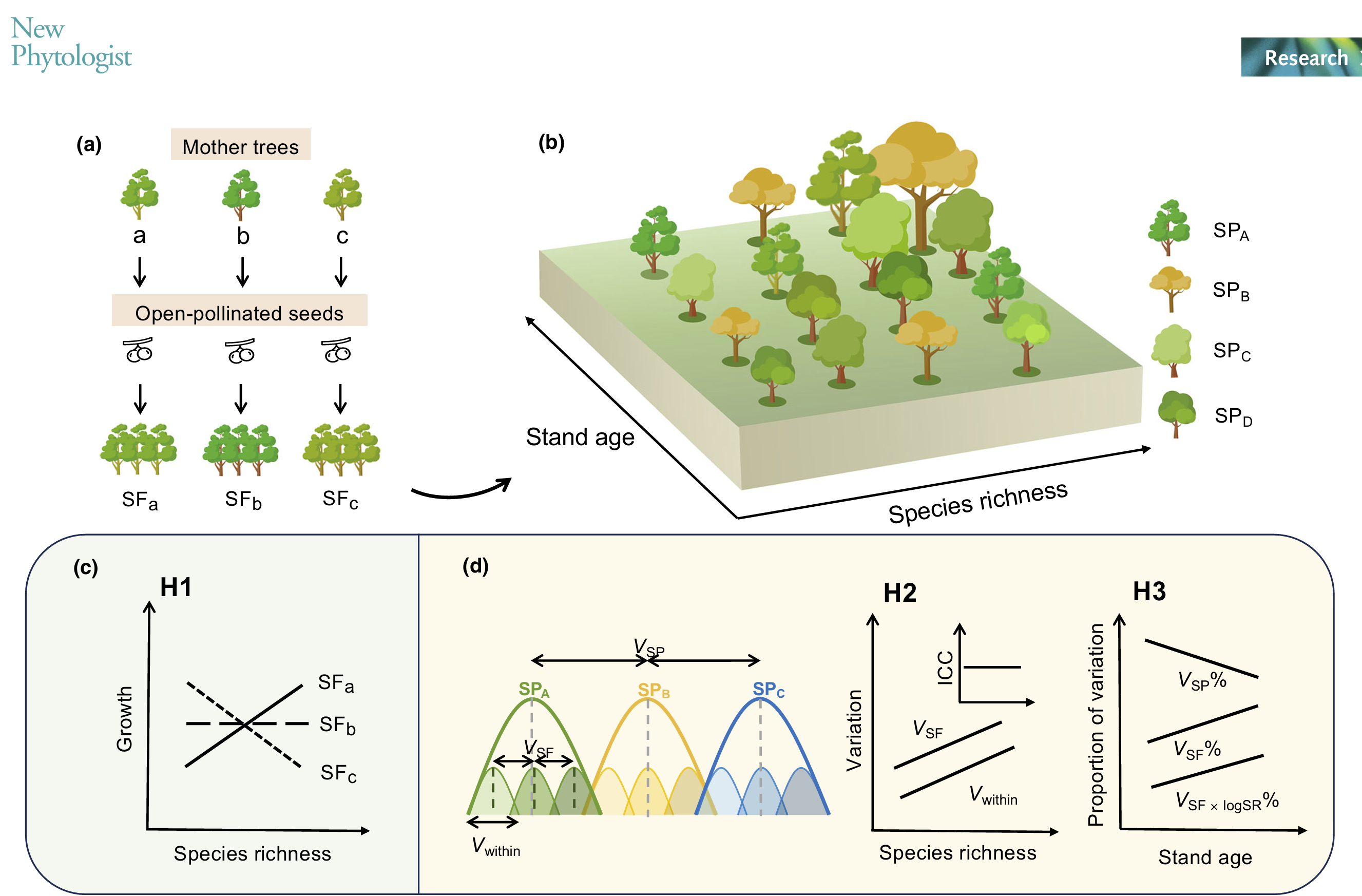
Figure 1. Overview of the research hypotheses.
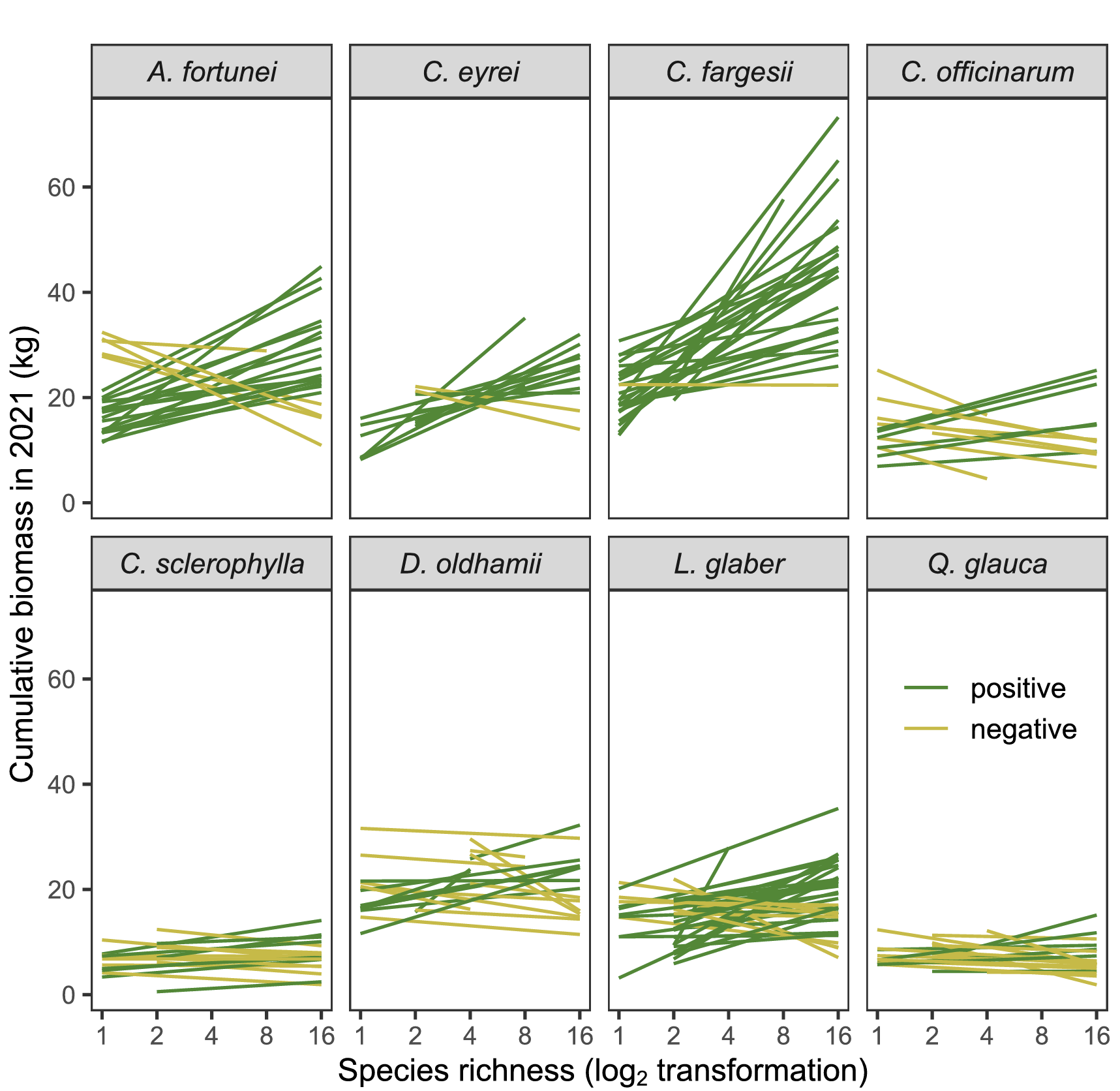
Figure 2. Growth reaction norms of different seed families along the species-richness gradient in the eight test species.
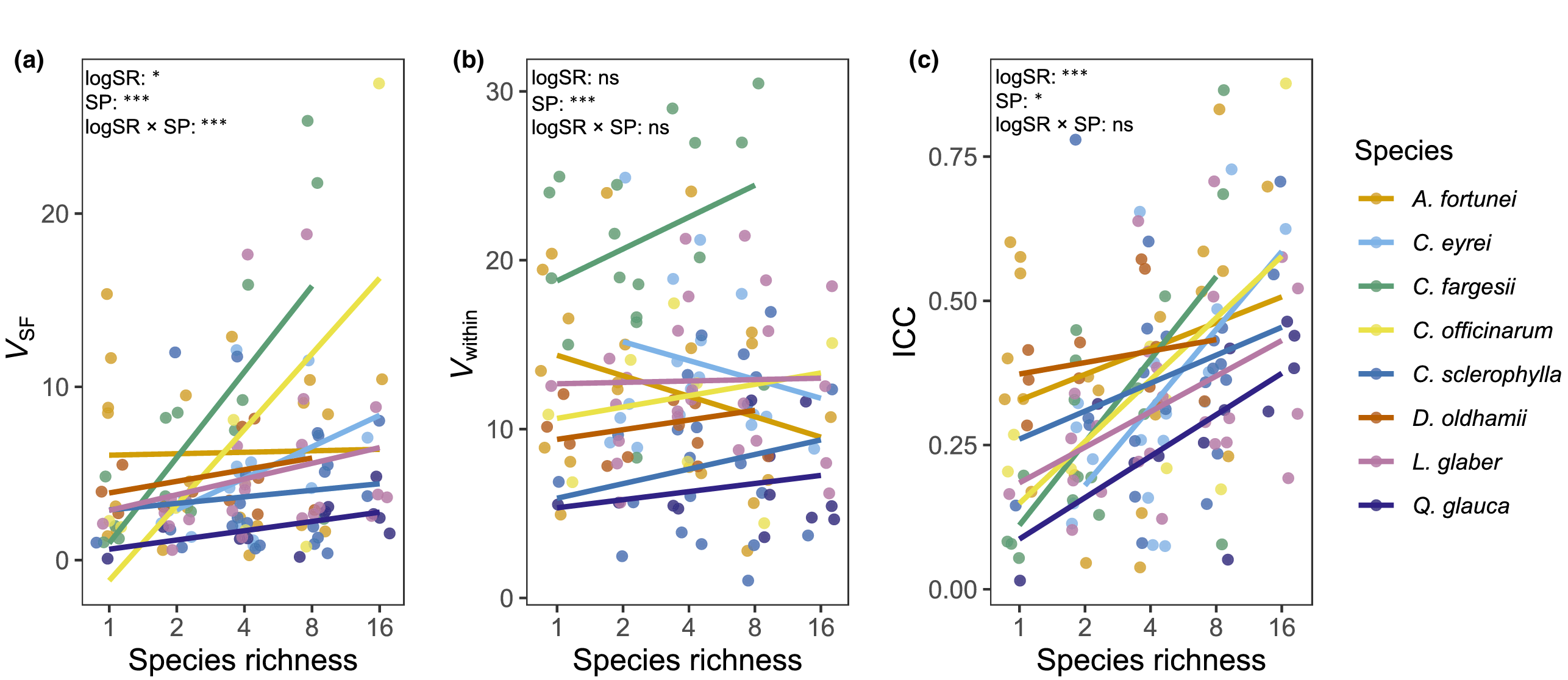
Figure 3. Between- and within-seed family variance components and the corresponding intraclass correlation coefficient (ICC) as a function of species richness.
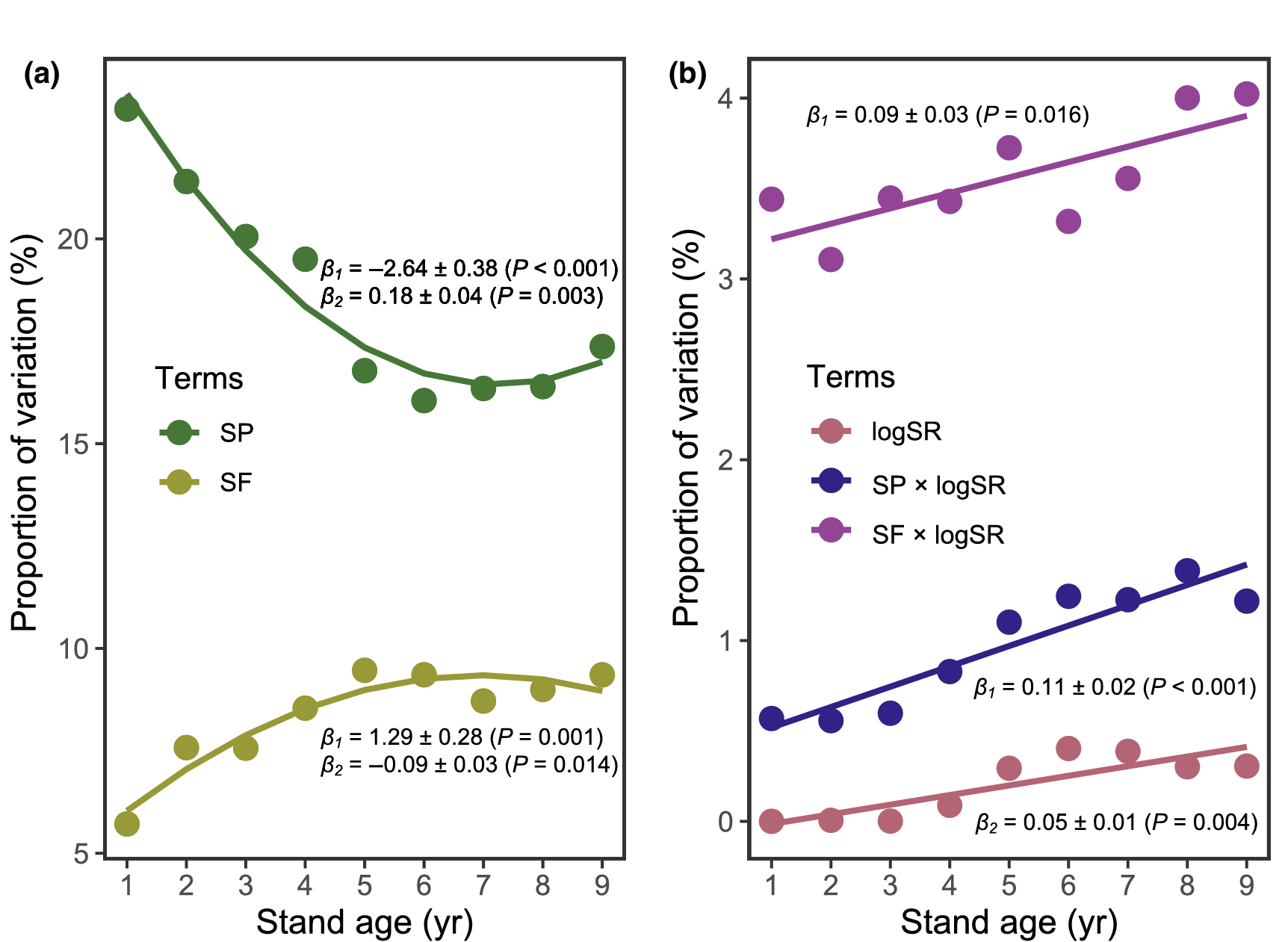
Figure 4. The relative variation (percentage sum of squares as the effect-size measure) of tree growth is explained by the explanatory terms as a function of stand age.
Literature:
Ting Tang, Bernhard Schmid, Meredith C Schuman, Franca J Bongers, Shan Li, Yu Liang, Sofia J van Moorsel, Goddert von Oheimb, Walter Durka, Helge Bruelheide, Keping Ma, Xiaojuan Liu*. 2025. Identifying seed families with high mixture performance in a subtropical forest biodiversity experiment. New Phytologist. 246(6):2537-2550. https://nph.onlinelibrary.wiley.com/doi/abs/10.1111/nph.70130.
